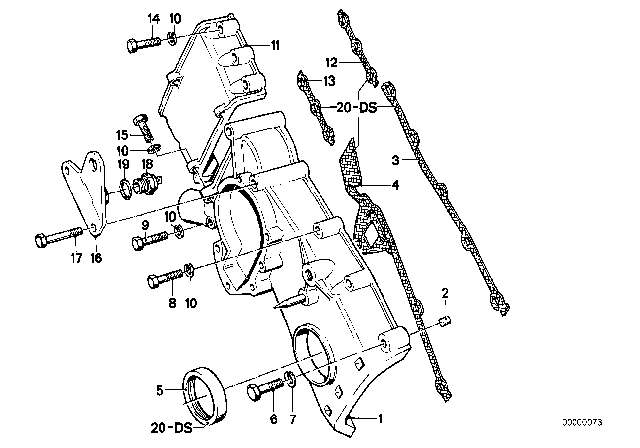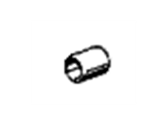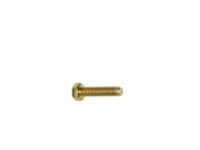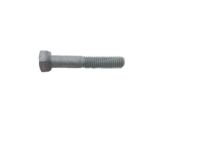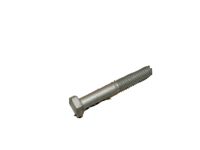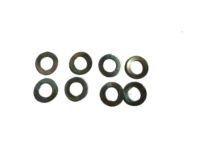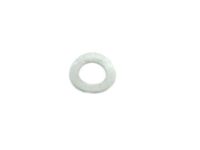The M20 engine in BMW vehicles is unique in that it uses a timing belt instead of the typical timing chain. The timing belt should be replaced according to specific intervals, including every 4 years, every other Service II, after 50,000 miles (80,000 km), or whenever removal is necessary for a repair. To remove the timing belt, start by disconnecting the negative battery cable and removing the distributor cap, rotor, and inner distributor cover. Then, remove the distributor guard plate (which also serves as the upper Timing Cover) by taking out the attaching bolts and nut. Rotate the crankshaft to set the No. 1 piston at TDC of its compression stroke, ensuring that the camshaft sprocket arrow aligns with the mark on the cylinder head. Remove the radiator, lower splash guard, and belts for the alternator, power steering, and air conditioning. Take off the crankshaft pulley and vibration damper, and if applicable, remove the crankshaft hub bolt using a gear puller. Loosen the alternator bracket bolt and swing the bracket out of the way, then remove the TDC transmitter and lower timing belt protective cover. Loosen the timing belt tensioner roller bolts and push the roller in to remove the belt, followed by removing the intermediate shaft sprocket bolt and sprocket. Loosen the oil pan bolts and remove the front pan bolts that go into the timing cover, using a thin blade to loosen the oil pan gasket. Remove the bolts holding the cover and lift it off the engine. To install the timing belt, first replace the oil pan gasket and seals in the cover if necessary. Install the timing cover using new gaskets and tighten the bolts to the specified torque. Install the intermediate shaft sprocket and tension the timing belt. Install the lower timing protective cover, TDC sender, alternator bracket, crankshaft hub, vibration damper, upper Timing Cover, and distributor cap. Finally, install the accessories and belts, the splash shield, and fill the cooling system with coolant mixture. Bleed the cooling system and reconnect the negative battery cable. It is important to inspect the timing belt for any signs of damage or wear, such as hardening of the rubber, cracks or peeling of the backing, missing teeth, or abnormal wear. If any of these conditions are present, the belt should be replaced, unless it is already within the recommended replacement interval.
Posted by BMWPartsDeal Specialist 

